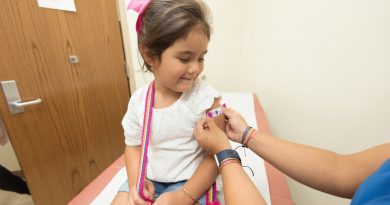Emergency Medical Services decision making on where to transport a child
Emergency care does not begin in the hospital; it begins the moment a patient or bystander recognizes the emergency. When someone calls 911 for an emergency, emergency medical services (EMS) professionals make a series of decisions that affect the care the patient receives. For pediatric emergencies, an important, little-known factor is how emergency medical technicians (EMT) and paramedics determine which hospital to transport a child.
Research on this topic has focused primarily on injuries and determining which patients require a trauma center. Though trauma represents half of pediatric EMS calls, medical complaints such as difficulty breathing, seizures, infections and exacerbation of chronic conditions comprise the other half of calls.
In Houston, EMS transports half of these children to a general emergency department (ED) rather than a children’s hospital. Nationally, EMS transports 90% of pediatric patients to general EDs. 
With this in mind, we sought to study what factors were associated with transporting these patients to a community site versus a children’s hospital in the Houston area. Potential advantages of general EDs are proximity for family, familiarity within a community and less resources expended for longer transports by EMS.
Conversely, children’s hospitals offer specialty care in pediatrics by physicians, nurses, child life specialists and many others. Additionally, children with chronic conditions may have established care with specialists at these centers.
We conducted a review of all children transported by the Houston Fire Department over a one-year period, totaling more than 10,000 patients. Patient, EMS and geographic factors were considered for association with transport to a children’s versus a general ED.
One notable finding was that patients transported to a general ED originated from areas of the city with lower average adjusted gross incomes and were more likely to have an unknown insurance status. This was true even when controlling for proximity to various hospital types, meaning that socioeconomic factors may play a role in EMS destination of transport decisions.
Similarly, patient language barriers and psychiatric complaints were associated with transport to a general ED. These challenging situations may decrease access to specialized pediatric care for these populations and may represent an area to improve health equity.
Conversely, transportation to children’s hospitals was associated with developmental delay and altered mental status, perhaps representing medically complex children that have established care with pediatric specialists. These patients also were younger. Caring for infants can be particularly challenging and anxiety-provoking for those with less pediatric experience, which is likely recognized by EMS providers as a benefit of care at a children’s hospital.
This study helped to identify patient, EMS and geographic factors that affect where children are transported when 911 is called in one metropolitan system. Future studies should investigate if this is generalizable to other cities and EMS agencies. Research on this topic has the potential to inform which children would most benefit from children’s hospital EDs and help align the goals and preferences of patients, EMS and hospitals.
By Dr. Kyle Schmucker, pediatric emergency medicine fellow at UPMC Children’s Hospital of Pittsburgh, and Dr. Manish I. Shah, professor of pediatrics, Baylor College of Medicine, associate division head, chief of academic development and strategy, Division of Emergency Medicine, and attending physician, Texas Children’s Hospital, Emergency Center



